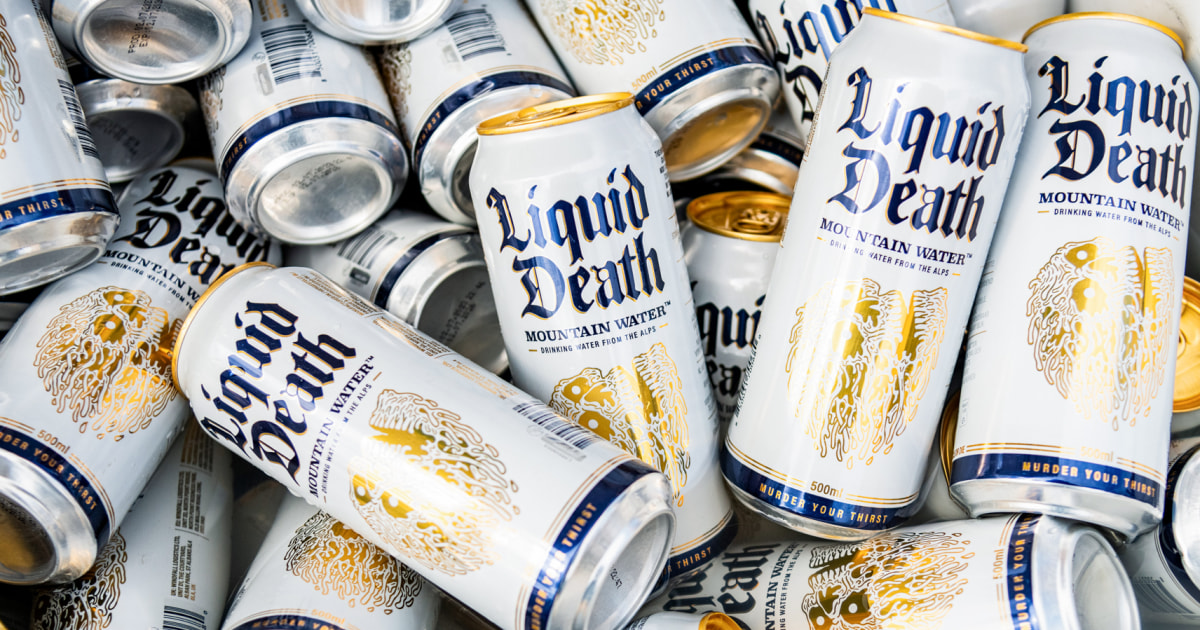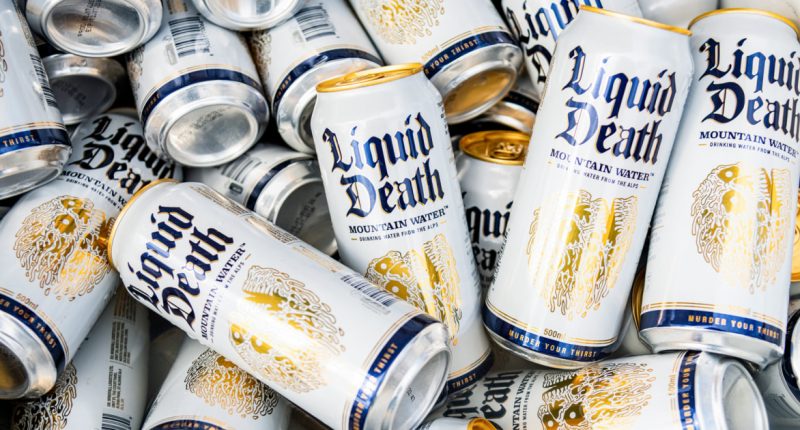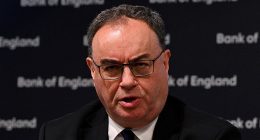
If you’ve been to a live event recently, you may have noticed something called Liquid Death being sold at food and drink stands.
For those not in the know, the name may be a little intimidating. But “Liquid Death” is just water in a can.
Now the brand, which has been independently owned and operated since its creation in 2017, has raised a new round of investment that values it at $1.4 billion.
In a release Monday, Liquid Death said it had hit $263 million in global sales and can be found in 113,000 retail outlets across the U.S. and U.K. It said it had seen “triple-digit” growth for the third-consecutive year, becoming the fastest-growing water and iced tea brand, citing SPINS, a market research group.
If it seems surprising that a company just selling water is growing this fast — that’s the point, experts say.
“The fact that it’s just water … is the key to Liquid Death’s success so far,” said Brad Avery, senior reporter for industry news group BevNET, told NBC News in an email. “When you look at branding in the bottled water category, so much of it has revolved around themes like the purity of the water, superior levels of hydration, etc. Liquid Death took off in part because it was a subversion of all the tropes of bottled water marketing that we’re familiar with.”
Selling water like alcohol
In other words, the branding is one of the main selling points. The name “Liquid Death” refers to the idea of “murdering your thirst,” as well as “death to plastic,” according to founder and CEO Mike Cessario. Liquid Death beverages are packaged in aluminum, which is more recyclable than plastic.
“We want to create truly healthy, better-for-you beverages, but just do so in the same funny way that typically unhealthy brands get marketed,” Cessario said in an interview with NBC News.
He said junk food brands and beer are also known for using comedy, but do so in the service of selling an unhealthy product.
“We’re making fun of the s—– corporate marketing that everyone hates,” Cessario said. “People now spend $10 a month for ad-free services because they have no entertainment value. We’re making fun of marketing with our brand.”
The brand has also grown a large following on social media, with five million followers on TikTok and 2.9 million on Instagram. Cessario, whose background includes working on viral campaigns for Netflix shows like “Stranger Things” and “House of Cards,” has worked with influencers like Blink 182 drummer Travis Barker, former “Jackass” star Steve-O and comedian Bert Kreischer — the latter of whom is now an official investor.
The company’s TikToks usually rack up hundreds of thousands of views, with one getting nearly 23 million.
Stigma removed for nights out
If you’re having a night out at the bar with your friends and you’re the only person who isn’t drinking, Avery said, you might feel silly holding a regular bottle of water while everyone else is drinking beers and cocktails.
Liquid Death is designed to eliminate that moment, he said.
“The Liquid Death can, to be blunt, looks cool,” Avery said. By putting nonalcoholic beverages in a package that looks like a beer can, he said, it creates a psychological effect of making it easier for someone more image conscious to consume.
Cessario has previously said one inspiration for Liquid Death came when he learned that some musicians who preferred to drink water on stage were pouring it into energy-drink cans for fear of embarrassment, as well as sponsorship requirements.
Indeed, Liquid Death’s cornerstone market remains live entertainment-goers. And America’s biggest live events company has bought in. Live Nation is one of Liquid Death’s longtime investors, and participated in the company’s latest funding round.
“We first invested in Liquid Death because we believed their brand and community was a great fit for the world of live music,” Live Nation CEO Michael Rapino said in a statement to NBC. “That’s proven to be a powerhouse combination as water sales continue increasing across our events, all while demand for Liquid Death is skyrocketing in other sectors as well.”
Riding the sober boom
Liquid Death has already begun expanding into sparkling water and iced tea as it also looks to capitalize on the surging growth in sober or “straight-edge” consumers who choose to incorporate nonalcoholic drinks into their lives, Avery said.
“I think Liquid Death in many ways can be considered a non-alc play, building on the ‘sober curious’ trend where consumers are drinking less alcohol and seeking out more alternatives,” Avery said.
Liquid Death’s broadening appeal means it is poised to take market share from both the water market as well as the beer and newly growing nonalcoholic drink market, said Dan Buckstaff, Chief Marketing Officer of SPINS, the market research group.
“Those categories are being pulled along by the overall consumer trend, and Liquid Death has added on, but with better packaging, a can vs plastic, and added on marketing and positioning that hits that sweet spot,” Buckstaff said.
Cessario said the brand wants to serve evolving consumer tastes that continue to shift away from traditional drink options.
“We’re creating a healthy beverage that works in party occasions where you otherwise don’t have many healthy options,” Cessario said.
Source: | This article originally belongs to Nbcnews.com










